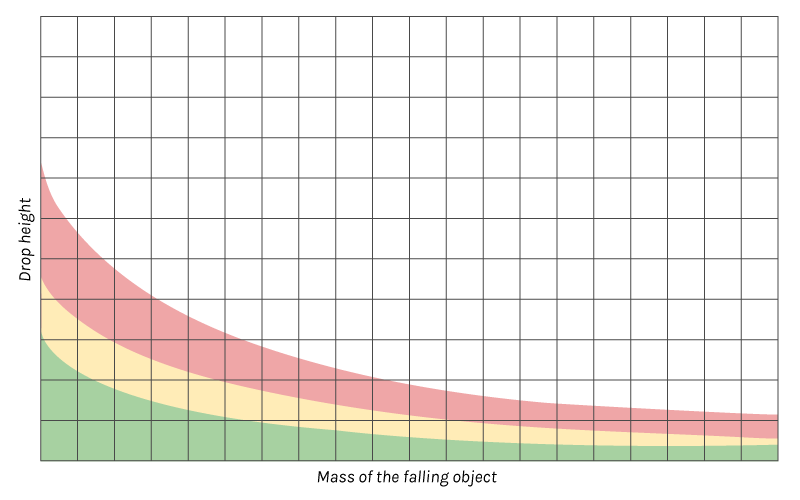In 2016, dropped objects from Offshore Oil facilities resulted in 255 worker fatalities in the United States, according to the Bureau of Labor Statistics, an alarming statistic that made clear the urgency of a curious, but important safety protocol that industries needed to adopt: fighting gravity. However, these incidents are far from inevitable and can be significantly reduced through a robust Dropped Object Prevention program. And, considering the scale and complexity of the energy industry’s operations, these programs became a fundamental piece of Industrial Safety and Risk Management. But what defines a Dropped Object?
What is a Dropped Object?
A Dropped Object refers to a piece of equipment that falls from a height by its weight and gravity or an object that falls from a height due to contact with an energy source. According to the Dropped Object Prevention Scheme (DROPS), objects that weigh less than three pounds can be fatal when they fall from a height of just 30 feet. As things fall farther, they move faster, resulting in more damage to whatever gets in their way.

Furthermore, the consequences of a falling object include personal injury, structural damage, damage to equipment, release of hydrocarbons, or fire. They can also lead to process interventions, project delays, and costly repairs. In worst cases, small objects falling can even turn into fatalities. Thus, what practices can industries adopt to prevent this kind of accident?

Traditional Practices for Dropped Object Prevention
Regular inspections
First, periodic inspections are crucial to identify potential hazards. All non-conformities found in these inspections must be reported for immediate correction depending on their risk severity. And, while operations require inspections, they must deal with limited time, budget constraints, and costly downtime. In this context, non-digitized methods – are characterized by manual analysis of inspection PDF reports.
Risk assessments
In the industrial context, these inspections are conducted through risk assessments. For Dropped Object Prevention, risk assessments include checking for loose items at height and ensuring all tools and materials are secured. They are represented by graphics that correlate the object’s mass to the height of the fall, providing a curve that determines the severity of the incident. The graphic below shows the results of dropped objects of specified weights from different heights, classifying criticality by color:

Personal Protection Equipment
The importance of Personal Protection Equipment (PPE) for falling objects doesn’t even need to be mentioned. However, hard hats, safety goggles, netting, and steel-toed boots provide a critical line of defense against injuries and fatalities caused by falling objects. Additionally, PPE helps avoid legal penalties and promotes a safety culture within the organization. In this regard, all DROPS protection must be aligned with guidelines established by API 4G, covering everything from main structures to the identification of bolts and all equipment inherent to the object drop inspection campaign
Crew Engagement
Besides the abovementioned procedures, employee participation is fundamental for enhancing workplace safety. Spotting potential hazards isn’t something that can be learned overnight, which means training programs and regular safety meetings help reinforce the importance of preventing dropped objects. From the perspective of an established safety culture, according to 3M, all employees are responsible for notifying supervisors of any drop hazards within their scope of work, conducting work only after all drop hazards have been eliminated or properly mitigated, and including potential drop hazards in Job Hazard Analyses and Pre-job Planning.
Conclusion
In this manner, a comprehensive Dropped Object Prevention program is crucial for ensuring safety and minimizing risks in the energy industry. Traditional methods, such as regular inspections, risk assessments, and crew engagement lay the groundwork for preventing accidents. However, these practices are often fragmented and lack the predictive capability needed for optimal safety management. In this context, new deep tech solutions can provide a holistic approach to preventing object drops and supporting maintenance decisions within complex industrial routines.



